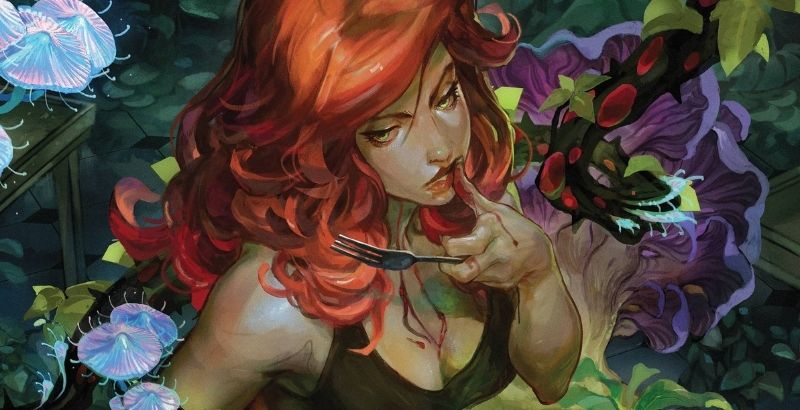
Exploring a new direction for the titular character, Poison Ivy #1 is written by G. Willow Wilson, drawn by Marcio Takara, colored by Arif Prianto, and lettered by Hassan Otsmane-Elhaou. Poison Ivy #1 is published by DC Comics. From an average Gotham City supervillain to dying, rising again, and being split into two distinct versions of herself, Poison Ivy has filled many roles in her recent appearances in comics. But now she’s setting out on her own, distancing herself from everyone she cares about, including her on-again/off-again girlfriend, Harley Quinn.
Poison Ivy #1 follows Ivy as she travels across the country, spreading death and decay to humans and animals alike. Finally, tired of being used and having choices made for her, Ivy is rebelling. It’s time for Ivy to decide her future or lack thereof; this new Ivy is going to save the world by destroying all of humanity, including herself.
While Ivy has always been more of a fan of the environment than humans, not shying away from murder, she’s never been suicidal before. But Ivy has never been quite so alone. Her relationship with Harley ended poorly. And she’s cut off from The Green, a feeling that for her is akin to losing one of the five senses.
I love the way Wilson writes Ivy. Ivy’s actions are extremist and inexcusable, but Wilson writes her with enough nuance that readers can still feel bad for her. In addition, Wilson writes a self-aware Ivy; she knows she’s evil. But despite all of this, Ivy still believes that her choices are for the greater good.
Takara creates masterfully drawn body horror. Ivy’s weapon of choice is parasitic mushrooms that cause euphoria right before they kill you, causing mushrooms to grow from your corpse quickly. Ivy says this is a death that doesn’t involve suffering. And maybe it is. But it certainly looks painful. Before the bodies of Ivy’s victims start to decay, they become horrific-looking human/fungal amalgamations, just barely recognizable as human beings. It’s a great visual representation of how Ivy herself is losing her humanity. But if you’re sensitive to body horror, you might want to sit this one out.
Prianto’s colors are an excellent addition to Takara’s art. Every page is full of vivid color, fitting the mood perfectly. An example is when Ivy reminisces about her last conversation with Harley. The colors are soft and well blended. They give the scene a dreamlike feeling, hinting to readers that Ivy may be idealizing things in her mind.
Otsmane-Elhaou’s lettering is an integral part of this issue. The speech bubbles containing Ivy’s narration look like bits of lined paper ripped out of a notebook. The letters themselves look looser, more handwritten as if these are pieces of the letter Ivy left behind. It’s a clever visual detail that builds upon the narrative.
Poison Ivy #1 is a stunning debut for a well-deserved solo series for a character who hasn’t had the chance to headline a series in quite some time.
Poison Ivy #1 is available now wherever comics are sold.
Poison Ivy #1
TL;DR
Poison Ivy #1 is a stunning debut for a well-deserved solo series for a character who hasn’t had the chance to headline a series in quite some time.




